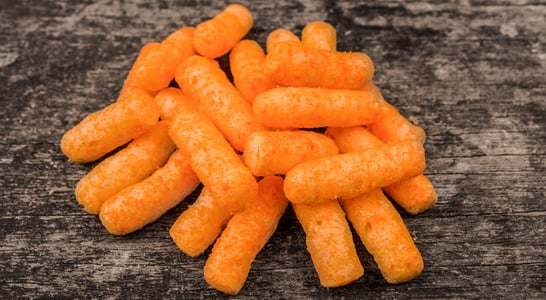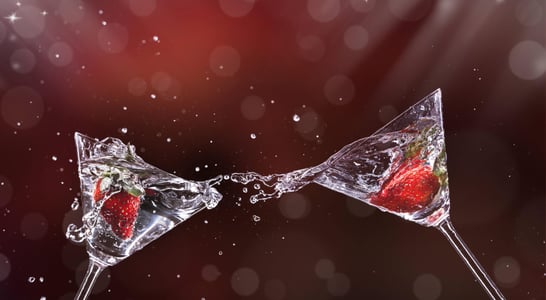
National Absinthe Day
The emerald liquid beckons, promising a mystical experience. As the spoon drips ice-cold water over the sugar cube, the aroma intoxicates. The Green Fairy whispers secrets, but beware: one too many sips, and she'll possess you.
Celebrated by artists and aristocrats alike for centuries, absinthe has long been the drink of choice for those creative types who dabble in the artistic world.
Also known as The Green Goddess, The Green Lady, or The Green Fairy, this controversial drink used to be a favorite among artists and writers due to its supposed ability to help with their creative flow.
National Absinthe Day aims to bring awareness and celebration to the strong alcoholic drink by observing its history and legacy, as well as encouraging adults to enjoy a couple of sips of its strong green charm.
History of National Absinthe Day
Just exactly when absinthe was first distilled and began being used is not quite clear. Created by using wormwood extracts and leaves, the drink may have its roots in medicinal remedies used by the ancient Greeks.
However, according to legend, absinthe first came about as a cure-all elixir that was eventually patented by Dr. Pierre Orginaire, a French doctor, around the year 1792.
The recipe for this concoction would continue to be sold in and around Europe as a medicinal elixir in the following years.
Then, in 1797 the first absinthe distillery appeared in Couvet, Switzerland. The makers at the time, known then as Pernod Fils, would sell the most popular brand of absinthe right up until 1914, which was when the drink was eventually banned in France.
French troops in the 1840s were given absinthe as a preventative for malaria so, when they came home, they brought their taste for the drink along with them. Eventually, absinthe would become popular among all social classes.
The processes of mass production allowed the price to fall and saw absinthe become one of the most commonly imbibed alcoholic beverages in France.
However, this drink’s especially high alcohol content would be one of the reasons it was ultimately banned in a number of countries by the early 1900s.
Believed to be a drink that caused its drinkers to create trouble and dissidence among society (with the accusations being that it caused violence and disorder), it would not start to be consumed again until later in the 20th century.
And even then, in most countries, the drink reentered society with certain restrictions on its hallucinogenic content.
While many people might call Absinthe a “liqueur”, it is not sweetened, which puts it in the category of a “distilled spirit”.The flavor is something like anise, and some people find that it tastes a bit bitter and very strong.
How to Celebrate National Absinthe Day
While it’s important to remember that this day is for adults of legal drinking age, National Absinthe Day brings with it a variety of fun ways to give heed to this strange drink. Consider these ways to celebrate:
Enjoy the Ritual of Absinthe
Absinthe is best enjoyed in moderation – remember, it is very strong!
Popularized in France, the traditional way of serving it is to place a sugar cube onto a specially designed (often decorative) spoon with holes in it. The spoon is placed over a short stemware glass that has already been filled with a measure of absinthe. Ice cold water is then poured over the sugar cube.
This method is sometimes referred to as the “absinthe drip”. The sweetness of the sugar cube and the dilution of the water make this extremely strong and bitter beverage a bit easier to take.
Learn About Art from the Late 19th Century
Absinthe was in its heyday toward the end of the 1800s, especially among writers and artists. Take a peek into the lives of these famous creatives who may have included absinthe as part of their process (or at least referred it in their art):
- Eduard Manet. This French impressionist painter actually titled his first major work, “The Absinthe Drinker”, which depicted a seedy Parisian scene.
- Oscar Wilde. Most famous for The Picture of Dorian Gray, this Irish author was quoted as saying that absinthe brought about various new ways to see the world.
- Vincent Van Gogh. A creative genius with a dark side, this Dutch impressionist was known to have imbibed various types of alcohol, including absinthe (which could have contributed to the struggles that led him to cut off his own ear).
Get Creative With Absinthe Mixed Drinks
If absinthe alone, even prepared in an above-mentioned manner, is a little too strong, it is also possible to mix up various cocktails with it. Plenty of tasty cocktails which can be made with the green drink that provide interesting flavor combinations. Some Absinthe mixed drink suggestions include:
- Death in the Afternoon: absinthe, champagne, simple syrup
- Sazerac Cocktail: cognac, rye, absinthe, whiskey, sugar cube, bitters
- Fairy Godmother: absinthe, elderflower liqueur, pineapple, lemon, lime
- Corpse River No 2: gin, orange liqueur, sweet white vermouth, lemon juice, absinthe
Unleash Inner Artistry and Creativity
Since absinthe was originally used in the artistic communities of France to further their creative pursuits, a great way to give a nod to National Absinthe Day is by enjoying a good amount of creativity in each person’s own life!
This might mean exploring those watercolors, grabbing the sketchbook, picking up a musical instrument, or even developing a new idea for a video game.
The final result doesn’t necessarily matter, of course. The purpose is to think more creatively, allow minds to stretch, and enjoy the process–even if the finished result isn’t something that is shared with another human soul! As always, make sure to enjoy National Absinthe Day in a safe and responsible manner!
National Absinthe Day FAQs
Did Absinthe inspire any famous works of art?
Yes, absinthe influenced many artists. Vincent van Gogh, a known absinthe drinker, painted “The Night Café,” capturing the ambiance of absinthe culture.
Edgar Degas’s “L’Absinthe” portrays a woman with a glass of absinthe, reflecting its societal impact.
What unique rituals are associated with absinthe consumption?
Beyond the traditional water drip, some enthusiasts use “absinthe fountains.” These ornate devices allow multiple drinkers to prepare their absinthe simultaneously, enhancing the communal experience.
How did absinthe become linked to bohemian culture?
In late 19th-century Paris, absinthe was affordable and potent. Artists and writers frequented cafés during “l’heure verte” (the green hour) to drink absinthe, fostering creativity and camaraderie.
Are there any myths about absinthe’s effects?
A common myth is that absinthe causes hallucinations. This stems from its thujone content, but modern research shows that typical absinthe contains too little thujone to cause such effects.
How do different countries celebrate absinthe today?
In Switzerland’s Val-de-Travers, the birthplace of absinthe, an annual festival features distillery tours, tastings, and cultural events.
New Orleans hosts absinthe-themed events, honoring its historical presence in the city’s cocktail scene.
What is the “louche” effect in absinthe preparation?
The “louche” effect occurs when water is added to absinthe, turning it cloudy. This happens because essential oils from botanicals like anise and fennel become insoluble, creating a milky appearance.
Why was absinthe banned in many countries?
Early 20th-century temperance movements and concerns over absinthe’s alleged harmful effects led to bans. Notably, a Swiss farmer’s violent crime, attributed to absinthe, fueled the prohibition movement.
How did absinthe make a legal comeback?
In the 1990s, producers challenged bans by demonstrating that absinthe’s thujone levels were safe. Countries like the U.S. lifted bans in 2007, allowing absinthe’s return to the market.
Are there any modern absinthe cocktails?
Yes, mixologists have created contemporary absinthe cocktails. The “Death in the Afternoon,” invented by Ernest Hemingway, combines absinthe with champagne.
The “Sazerac,” a New Orleans classic, uses absinthe to rinse the glass, adding a unique flavor.
What are some misconceptions about absinthe?
Many believe absinthe is hallucinogenic or toxic. In reality, when consumed responsibly, it’s no more dangerous than other high-proof spirits. Modern absinthe adheres to safety regulations, dispelling old myths.
Also on ...
View all holidaysNational Cheese Doodle Day
Crunchy, cheesy bites that make your taste buds dance with joy, the ultimate snack-time sidekick for any occasion.
St. Piran’s Day
Commemorating a cultural celebration, echoing the spirit of a revered patron, and fostering a sense of unity among Cornwall's residents.
We think you may also like...
Shot Day
Tiny glasses of liquid dynamite, they pack a punch in a small package, igniting the night with a fiery burst of fun.
World Martini Day
Gin and vermouth, shaken not stirred…and garnished with olives. The classic and iconic Martini had been a favorite of everyone from James Bond to Ernest Hemingway.
International Whisk(e)y Day
Take a sip of the liquid gold that hails from the barrels of fermented grains. It's a complex, warm, and welcoming elixir.
National Bloody Mary Day
Start your morning with a refreshing tomato juice and vodka cocktail, swap in different spirits or pair with crackers, olives and cheese.








